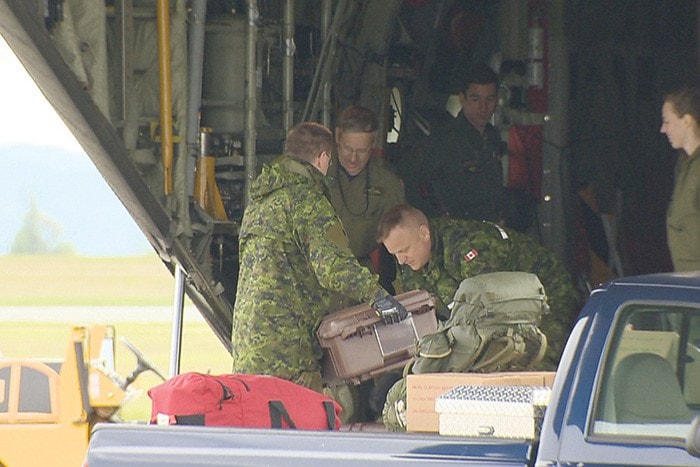With 14 hours’ notice, a seven-member team composed of firefighters from 19 Wing Comox left the Valley Sunday afternoon to offer disaster assistance to those affected by the 7.8-magnitude quake in Nepal which hit the country Saturday.
The members are part of a light urban search and rescue team, tasked to assist the Disaster Assistance Response Team (DART) out of Trenton, Ont., explained Lt.-Col. Clinton Mowbray, acting wing commander for CFB Comox.
“They’ll be put on the ground and the first concern of the team is to make sure the area is safe to operate in. Once they’ve made that determination, they’ll work with other members of the Canadian Forces and other nations that are providing assistance … to start helping to see if they can find any survivors and provide relief to the survivors in Nepal,” he explained to media.
Mowbray said Canada is usually one of the first countries to offer assistance to nations in need.
When he first learned of the quake, he noted it wasn’t a surprise the request came to assist.
“Canada has not turned its back to any nation that’s been in need like this. Haiti is a great example a few years ago; Canada was one of the first countries on the ground and delivered a substantial amount of assistance.”
The team hopes to be able to help with survivors, but also people who have been recovered and may not have homes, he added. They will also be providing assistance with clean water, hospital facilities and medical attention.
Sgt. David Hillier, one of the seven members heading to Nepal, said once they meet up with the DART team in Trenton, their goal is to locate victims or people trapped in rubble piles - sometimes for days - using sonar or acoustic equipment onboard their plane.
“Any area that has a large disaster, one of the things that we usually come across is the local population is usually in full swing of getting things organized and looking for victims, so infrastructure is usually under a lot of damage in those areas. We except to see a lot of rubble, a lot of buildings (down) ... and a lot of civilians looking for survivors.”
Along with seven members from the DART team, the 14 searchers will also do reconnaissance, survey the area to do damage assessments, gather information and perform light surface rescue as well, which includes technical search and rescue - high angle rescue, patient movement and medical assistance.
“This is something that we’ve actually trained for in the past three or four years. It all stemmed from the earthquake that happened in Haiti in 2010. From there, we’ve done a lot of training to go towards an earthquake environment so the guys are really excited,” Hillier added.
“We put a lot of time into training, travelling all over the country and doing different courses, so we’re definitely looking forward to getting over there and doing some good.”
The Canadian Red Cross has a fundraising website set up for anyone wishing to donate to the emergency relief efforts. Go to bit.ly/1bwG29L to donate.
